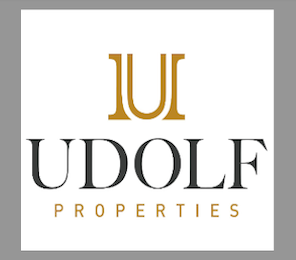
This month, the University of Hartford’s Maurice Greenberg Center for Judaic Studies embarked upon a series of projects with the antiquities authority of Rhodes, Greece at four sites that are of historical significance to Rhodes — both in general and for the Jews of Rhodes in particular.
Two major devastations that took place in Rhodes will be the subject of a power-point lecture by the Center’s director, Professor Richard Freund, at the University of Hartford on Feb. 3 at 7 p.m. Freund, who recently returned from the University’s excavations project in Rhodes, will show for the first time some of the discoveries made; and filmmakers Ari Jacobson and Jonathan Gaynes of Focal Range Productions in New York, who accompanied Freund to Rhodes last summer for the initial stages of the project, will present some of their work.
Two Colossal Devastations
The Jews were a part of the long history of the people of Rhodes from the third century BCE. It appears that there was a long relationship of shipping goods from Judea to Rhodes to Judea for over 2,000 years.
The history of the Jews of Rhodes was also a part of the great mystery of the island of Rhodes: What happened to the Colossus of Rhodes?
In 226 BCE, the famed 110-foot statue known as the “Colossus of Rhodes ” — one of the most well known wonders of the ancient world – was destroyed by an earthquake that devastated the western Mediterranean. The destruction of the Colossus, which took 12 years to build and symbolized the power and glory of the Greek Empire, was a colossal loss for Rhodes. It was never rebuilt.
The Jews came to Rhodes from ancient Israel in the second century BCE, probably as emissaries of the Maccabees, and built one of the most unique Jewish cultures that existed for more than 2,000 years, disappearing suddenly during the Holocaust.
Trade between Rhodes and ancient Israel continued during much of this time. Herod the Great, King of Judea, loved the island and oversaw great construction projects there as he was re-building the Temple of Jerusalem. The Jews of Rhodes developed a community near the port during the Middle Ages that was highly regarded for its rich cultural life. It was known as “La Chica Yerushalaytim” (in Ladino, the “small Jerusalem”).
Jewish life in Rhodes came to an abrupt end on July 23, 1944, when the last 1,600 Jews who were left on the island were rounded up and shipped off to Auschwitz.
The two colossal devastations – the destruction of Rhodes Jewry and the destruction of the ancient Colossus of Rhodes – are linked. As part of his lecture, Freund will draw the connections between the two devastations.
The First Devastation: Destruction of the Colossus of Rhodes

Members of Richard Freund’s team on the site of the main old synagogue of Rhodes, the Kahal Grande (Ladino for “great”) or Kahal Gadol (Hebrew for “great”) Synagogue earlier this month. Built in the 16th century and later destroyed, it has sat in the middle of the Old Town of Rhodes, just waiting to be rediscovered.
In the third century BCE, the Rhodians built the Colossus of Rhodes to celebrate their defeat in 304 BCE over the Seleucid overlords (the same ones that pop up in the story of Chanukah), whose weapons and bronze they used to build the tall and imposing statue. Today, this victory is regarded by the Rhodians as their “Bunker Hill.” Built using a unique technology, the statue was draped in bronze sheets that on sunny days gave it a godlike appearance; and it was dedicated to Helios, the god of the sun. For many ancient mariners, the Colossus of Rhodes served as a kind of sea marker, much like the modern-day Colossus, the Statue of Liberty in New York City. It directed ships to the island and could be seen from miles away. After its destruction, the Colossus’ remains sat for centuries. Freund’s team will discuss efforts by scholars all over the world to find what is left of the statue.
The Second Devastation: The Holocaust and Sephardic Jewry
The story of the Jews of Rhodes is interwoven with one of the wonders of the ancient world, the Colossus.
Consider the language of the Jews of Rhodes is a particularly sophisticated version of Ladino, which is a beautiful blend of the languages of the people who, over the centuries, have conquered Rhodes; weaving together the language, music and cultural traditions of the early Roman Jews, as well as the languages of Arabic, Turkish, Italian and modern Greek.
The original Jewish community of Rhodes was frequently visited by many: King Herod visited in the first century BCE; Paul of Tarsus visited in the first century CE; the Caliph of the Umayyads Muslims in the seventh century CE found Rhodes one of the best staging areas for his move to Spain; the Templars befriended the Jews of Rhodes during the Crusades, as they left Akko in the early 14th century; the exiled Jews of Spain in the 16th century found groups of Jews who welcomed them; the false Messiah Shabbetai Tzvi in 1666 showed up on his way to initiate the Messianic Kingdom in Israel; and, in the 20th century, the Italians oversaw a unique, modern rabbinical college in Rhodes.
Like the fate of other Sephardic Jews, the fate of the Jews of Rhodes during the Holocaust is rarely spoken about when people discuss that dark period of modern Jewish history. Only about 150 Jews of Rhodes survived the round-up and train ride to Auschwitz, making it to Jan. 27, 1945 when Auschwitz was liberated. As part of his work, Freund has helped to preserve the Jewish culture of Rhodes by interviewing Jewish families with connections to the island who left before the Holocaust.
In 2013, the Greenberg Center launched a new project with the goal of re-discovering the history of the Jews of Rhodes and their unique culture and synagogues through archaeology and through the Center’s “In Our Own Words” project of the Museum of Jewish Civilization at the University of Hartford. Directed by Dr. Avinoam Patt, the Philip D. Feltman Professor of Modern Jewish History at the Greenberg Center, the “In Our Own Words” project features interviews with the children and grandchildren of survivors and members of the diaspora of Rhodes who escaped before the Holocaust.
Sponsored by the Korowitz Family Greek Archaeological Fund at the Greenberg Center, the Flory Jagoda Fund of the Virginia Humanities, and the Targum Shelishi Fund in Florida, the archaeological work and testimonies project began in January 2015 and will seek out the secrets of the ancient synagogues, cemeteries and buried parts of Rhodes history that have been nearly forgotten.
Dr. Richard Freund’s lecture will be presented on Tuesday, Feb. 3, 7 p.m. at the Mali Auditorium II, Dana Hall on the campus of the University of Hartford, 200 Bloomfield Ave. The event is free and open to the public. Seating is limited; reservations are recommended by calling (860) 768-5018.
CAP: Part of the Kahal Shalom Synagogue in Rhodes







 Southern New England Jewish Ledger
Southern New England Jewish Ledger













